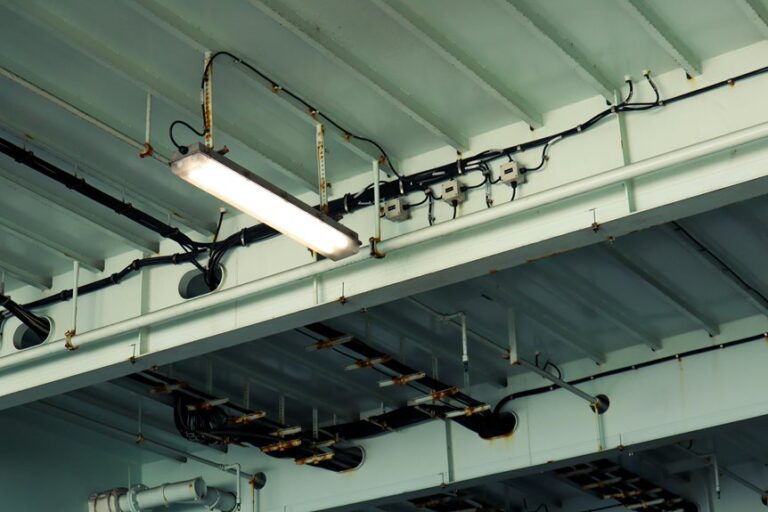When you consider the critical role electrical power quality plays in operational efficiency, it becomes evident that monitoring is not just beneficial—it's essential. You need to track parameters like voltage fluctuations and harmonics to identify potential issues before they escalate. Advanced tools, including IoT and machine learning, provide real-time insights that help in making informed decisions. However, the landscape of power quality monitoring is continually evolving, prompting the question of how these innovations can further enhance operational reliability and compliance. What implications might these advancements hold for your organization's electrical systems?
Importance of Power Quality
Power quality is vital for the efficient operation of electrical systems and equipment. Poor power quality can lead to voltage sags, swells, and harmonic distortions that disrupt your operational processes. When you experience these disturbances, the performance of your equipment may degrade, leading to increased downtime and maintenance costs.
You mightn't realize it, but fluctuations in power quality can also strain your electrical components, causing premature failure and reducing their lifespan.
Moreover, inadequate power quality can impact productivity and reliability. If you're running sensitive equipment, even minor disturbances can result in data loss or equipment malfunction. This not only affects your output but can also compromise customer satisfaction.
You need to monitor and improve power quality consistently to avoid these pitfalls.
In addition, regulatory standards increasingly demand high power quality levels. Non-compliance could lead to penalties and loss of reputation.
As a result, adopting proactive measures for power quality management is essential for your operational efficiency and financial performance. By prioritizing power quality, you're not just safeguarding your equipment but also enhancing overall system reliability and productivity.
Key Power Quality Parameters
Understanding key power quality parameters is essential for maintaining system reliability.
You'll need to take into account voltage fluctuations, as they can considerably impact equipment performance, alongside the effects of harmonics and distortion, which can lead to inefficiencies and potential damage.
Voltage Fluctuations Impact
Voltage fluctuations can greatly impact the quality of electrical power, affecting both equipment performance and system reliability. When voltage levels vary unexpectedly, it can lead to several adverse effects on your electrical systems. You need to recognize these impacts to maintain ideal operations.
- Equipment Stress: Frequent voltage changes can put undue stress on electrical components, leading to premature failures and increased maintenance costs.
- Operational Disruptions: Sensitive equipment, such as computers and machinery, often struggles with voltage fluctuations, causing interruptions in processes or data loss.
- Energy Efficiency Loss: Inconsistent voltage levels can result in energy wastage, as equipment may draw more power or operate inefficiently under fluctuating conditions.
The significance of monitoring voltage fluctuations can't be overstated. By implementing robust power quality monitoring systems, you can identify and address these fluctuations proactively.
This not only enhances system reliability but also extends the lifespan of your equipment. Ultimately, understanding the impact of voltage fluctuations is essential for maintaining high power quality and ensuring the smooth operation of your electrical systems.
Harmonics and Distortion Effects
Harmonics and distortion are critical parameters that can greatly degrade the quality of electrical power in your systems. When nonlinear loads, such as variable frequency drives or computer power supplies, draw current, they create harmonics—voltage or current waveforms that deviate from the fundamental frequency.
These harmonics can lead to increased losses, overheating of equipment, and even malfunctions in sensitive devices. You may notice distortion in your power system manifested as a poor power factor, which can increase your energy costs and reduce system efficiency.
The Total Harmonic Distortion (THD) metric helps quantify this distortion, giving you a clearer picture of power quality. Ideally, THD should remain below specified thresholds depending on your application.
To mitigate these issues, consider implementing power conditioning devices, such as harmonic filters or active power factor correction systems. Regular monitoring of harmonics and distortion levels can't only protect your equipment but also guarantee compliance with relevant standards like IEEE 519.
Common Power Quality Issues
Power quality issues can considerably impact the efficiency and reliability of electrical systems. Understanding these issues is essential for maintaining peak performance.
Here are three common power quality problems you might encounter:
- Voltage Sags and Swells: These fluctuations can occur due to sudden increases or decreases in load. Voltage sags can lead to equipment malfunction, while swells may damage sensitive devices.
- Transients: Rapid, short-duration voltage changes can arise from lightning strikes or switching actions. Transients can cause significant harm to electrical components, leading to premature failures.
- Frequency Variations: Deviations from the nominal frequency can disrupt the operation of synchronous machines and other critical equipment. Frequent variations may result in inefficiencies or operational failures.
Addressing these power quality issues requires a proactive approach.
By identifying and mitigating these problems, you'll enhance the reliability of your electrical systems. Regular assessment and intervention can prevent costly downtime and equipment damage, ensuring that your operations run smoothly and efficiently.
Always keep an eye on the indicators of power quality to stay ahead of potential challenges.
Monitoring Techniques and Tools
While understanding power quality issues is crucial, effectively monitoring these conditions is equally important to guarantee system reliability. To achieve this, you can employ various monitoring techniques and tools that provide accurate, real-time data. These range from portable power analyzers to permanently installed monitoring systems.
Portable power analyzers are versatile tools that allow you to measure voltage, current, harmonics, and other critical parameters in situ. They're particularly useful for spot checks or temporary assessments in specific locations.
On the other hand, permanent monitoring systems are installed at key points in your electrical network, continuously tracking power quality metrics and sending alerts when thresholds are breached.
Advanced software platforms enhance data analysis and visualization, enabling you to interpret complex datasets easily. Some systems incorporate machine learning algorithms, which can predict potential power quality issues based on historical data trends.
Additionally, consider using digital fault recorders and oscilloscopes for detailed waveform analysis. These tools allow you to capture transient events and analyze deviations from normal operating conditions.
Benefits of Power Quality Monitoring
Effective power quality monitoring brings substantial benefits that enhance the reliability and efficiency of electrical systems. By investing in extensive monitoring, you can proactively address potential issues before they escalate into costly failures.
Here are three key benefits you'll experience:
- Improved Equipment Lifespan: Consistent monitoring helps identify issues like voltage sags or harmonics that can damage sensitive equipment. By mitigating these problems, you extend the lifespan of your devices.
- Operational Efficiency: Detecting power quality disturbances allows you to optimize energy usage. This leads to reduced operational costs, as your systems can run more efficiently without unnecessary interruptions.
- Enhanced Reliability: With real-time data analysis, you can pinpoint anomalies and implement corrective actions swiftly. This reliability minimizes downtime and ensures your operations run smoothly.
Regulatory Standards and Compliance
In today's complex electrical landscape, adhering to regulatory standards and compliance is vital for maintaining high power quality. You need to understand that various organizations, such as the Institute of Electrical and Electronics Engineers (IEEE) and the International Electrotechnical Commission (IEC), set forth guidelines that govern power quality parameters. These standards help you guarantee that the electrical systems you're working with operate efficiently and safely.
Compliance isn't just a matter of following guidelines; it also involves regular assessments and documentation. By monitoring voltage sags, harmonics, and frequency variations, you can identify discrepancies that may lead to operational inefficiencies or equipment damage.
Non-compliance can result in penalties, increased operational costs, and even legal ramifications. It's important to stay updated on changes in regulations and standards related to power quality.
Implementing corrective actions based on compliance findings not only enhances system reliability but also boosts customer satisfaction. Ultimately, understanding and adhering to these standards is a proactive approach that minimizes risks and maximizes performance in your electrical systems.
Implementing a Monitoring System
To effectively implement a monitoring system for electrical power quality, you must first assess the specific needs and characteristics of your electrical infrastructure. Identifying the vital areas that require monitoring will help you select the appropriate equipment and software.
Here are three key factors to take into account:
- Load Types: Understand the types of loads connected to your system. Different loads may introduce various disturbances, so it's essential to monitor their impact on power quality.
- Monitoring Points: Determine where to install monitoring devices. Key locations include the main service entrance, critical circuits, and downstream equipment, as these points will provide extensive insights into your power quality.
- Data Requirements: Define the parameters you need to track, such as voltage sags, harmonics, and transients. This data will guide you in selecting the right monitoring technology and guarantee you capture relevant information.
Once you've established these factors, you can proceed to select suitable monitoring equipment.
Analyzing Power Quality Data
Analyzing power quality data is essential for maintaining system efficiency and reliability.
You'll focus on key metrics such as voltage sags, harmonics, and frequency variations to assess performance.
Identifying common power quality issues allows you to implement targeted solutions and enhance overall system stability.
Importance of Power Quality
Power quality is critical for the reliable operation of electrical systems, affecting everything from industrial machinery to sensitive electronic devices. When you monitor and analyze power quality, you can identify and resolve issues that may compromise system performance.
Understanding the importance of power quality helps you maintain operational efficiency and reduce costs.
Here are three key reasons why power quality matters:
- Equipment Longevity: Poor power quality can lead to premature equipment failure, resulting in costly repairs and replacement. By guaranteeing superior power quality, you extend the lifespan of your devices.
- Operational Efficiency: Fluctuations in power quality can disrupt production lines and lead to inefficiencies. Monitoring allows you to minimize downtime and maintain consistent output.
- Compliance and Safety: Many industries face regulatory standards regarding power quality. Regular analysis helps you meet compliance requirements and guarantees a safe working environment for your personnel.
Key Metrics to Analyze
Understanding key metrics is important for effective power quality monitoring. You'll want to focus on several significant parameters to gain a thorough view of your electrical system's performance.
First, total harmonic distortion (THD) measures the distortion of voltage and current waveforms caused by non-linear loads. Monitoring THD helps you guarantee that your system operates within acceptable limits.
Next, voltage sags and swells are essential metrics that indicate short-term variations in voltage levels. Tracking these events allows you to identify potential issues that could affect sensitive equipment.
Additionally, you'll want to analyze frequency stability, which is important for maintaining the operational efficiency of your electrical devices.
Power factor is another important metric, representing the ratio of real power to apparent power in your system. A low power factor can lead to increased energy costs and reduced system efficiency.
Finally, look at transient voltages, which can cause immediate damage to equipment. By systematically analyzing these key metrics, you can take proactive measures to enhance power quality and protect your electrical infrastructure, ultimately leading to improved reliability and operational efficiency.
Common Power Quality Issues
What common power quality issues should you be aware of when monitoring your electrical system? Understanding these issues is essential for maintaining ideal performance and minimizing downtime. Here are three key problems you might encounter:
1. Voltage Sags and Swells: These fluctuations can occur due to sudden changes in load or faults in the electrical system.
Voltage sags can lead to equipment malfunction, while swells can damage sensitive electronics.
2. Harmonics: Generated by non-linear loads, Harmonics can distort the current waveform, resulting in overheating, equipment failure, and increased losses.
Monitoring harmonic distortion is critical for ensuring compliance with standards like IEEE 519.
3. Transient Events: Sudden spikes in voltage, often caused by lightning or switching operations, can severely impact electrical devices.
Proper surge protection and monitoring can help mitigate these risks.
Case Studies and Examples
Numerous case studies highlight the critical importance of electrical power quality monitoring across various industries.
For instance, in a manufacturing facility, you might encounter significant downtime due to voltage sags, leading to costly production losses. By implementing a power quality monitoring system, the facility was able to identify and mitigate these sags, resulting in a 25% reduction in downtime.
In the healthcare sector, another case study revealed how power quality issues affected sensitive medical equipment. You'll find that fluctuations in voltage can cause equipment malfunctions, jeopardizing patient safety. By monitoring the power quality, the hospital successfully guaranteed stable voltage supply, enhancing operational reliability and patient care.
Additionally, consider a data center that faced frequent outages attributed to harmonic distortion. By deploying power quality analyzers, you can directly address these distortions, optimizing the power factor and improving efficiency.
This proactive approach not only increased the reliability of the data center's operations but also reduced energy costs.
These examples illustrate that by actively monitoring and addressing power quality issues, you can enhance operational efficiency, reduce costs, and improve overall system reliability across various fields.
Future Trends in Power Quality
As industries increasingly rely on advanced technologies and digital solutions, the landscape of electrical power quality is evolving rapidly. You need to stay ahead of these changes to guarantee peak efficiency and reliability in your operations.
Here are three key trends shaping the future of power quality:
- Smart Grids: As smart grid technology becomes more prevalent, real-time monitoring and management of power quality issues will enhance system reliability. You'll have access to data analytics that identify disturbances before they escalate.
- Integration of Renewable Energy: The shift towards renewable energy sources introduces new challenges in power quality, such as fluctuations in voltage and frequency. You'll need to adopt advanced grid management techniques to maintain stability amidst these variations.
- IoT and AI Applications: The Internet of Things (IoT) and artificial intelligence (AI) are set to revolutionize power quality management. By leveraging predictive analytics, you can anticipate potential disruptions and improve system performance proactively.
Keeping pace with these trends is essential for maintaining high power quality standards.
Conclusion
In summary, prioritizing electrical power quality monitoring is like fine-tuning a well-oiled machine; every parameter you track enhances efficiency and reduces downtime. By leveraging advanced monitoring tools and techniques, you can swiftly identify and rectify issues before they escalate. This proactive approach not only guarantees compliance with regulatory standards but also fortifies system reliability. As technology evolves, embracing these monitoring practices will be essential for staying ahead in the ever-changing landscape of electrical systems.








